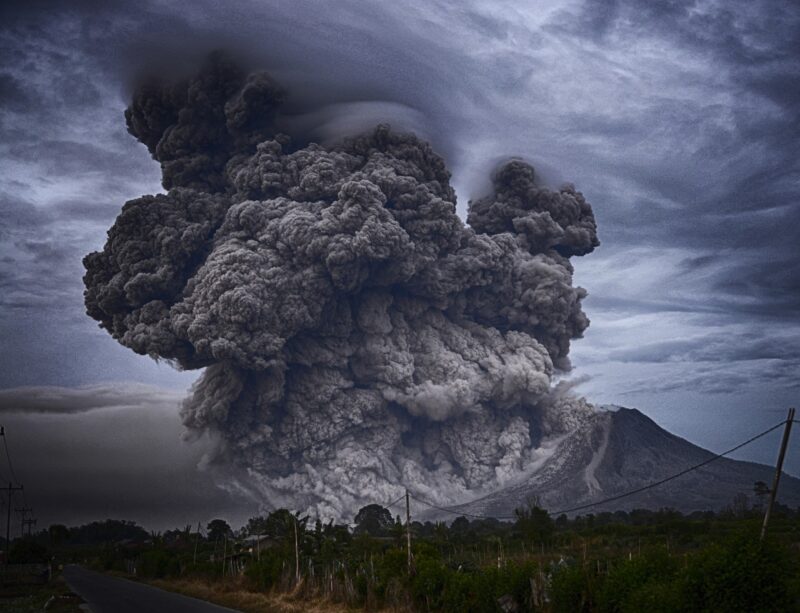How Volcanoes Have Shaped Landscapes and Influenced Myths
November 17, 2024

Volcanoes are among the most powerful and dramatic forces of nature, capable of reshaping entire landscapes in mere moments. Yet, their impact is not limited to geological formations; throughout history, volcanoes have also inspired myths that illuminate the cultural and spiritual lives of the communities that surround them. From the notorious eruptions of Mount Vesuvius to the sacred peaks of the Andes, the relationship between humans and volcanoes is both complex and profound.
1. The Geological Forces Behind Volcanoes
Volcanoes are formed by the movement of tectonic plates beneath the Earth’s surface. When these plates pull apart or collide, magma can seep through the cracks, leading to volcanic eruptions. This process can create different types of volcanoes – effusive volcanoes, where magma flows easily, and explosive volcanoes, which erupt violently. The effects of these eruptions can be long-lasting, leading to the creation of new landforms such as mountains, islands, and plateaus.
Volcanic eruptions create fertile soils conducive to agriculture due to the minerals and nutrients released from magma. This is why many ancient civilizations flourished near volcanoes, despite the obvious danger they presented. The ash and volcanic rock can break down into rich soil, making areas around volcanoes some of the most productive farmland in the world.
2. The Influence of Volcanoes on Landscapes
The physical landscape of our planet has been dramatically altered by volcanic activity. One prime example is the Hawaiian Islands, formed by the volcanic activity of the Hawaiian hotspot. Over millions of years, repeated eruptions have built these islands, creating vast mountains and unique ecosystems. The geographical features can vary greatly; from the gentle slopes of shield volcanoes like Mauna Loa to the steep, conical profiles of stratovolcanoes like Mount Fuji.
Beyond creating islands and mountains, volcanoes can also lead to the formation of lakes, calderas, and plains. The sudden collapse of a volcano’s summit after an eruption, like that of Mount St. Helens in 1980, can create a caldera — a large depression that can fill with water to become a lake.
Erosion and weathering of volcanic rock over time contribute to the landscapes seen today. Valleys carved by lava flows can eventually become fertile plains, creating new environments for flora and fauna to thrive.
3. Myths and Folklore Associated with Volcanoes
Throughout history, volcanic eruptions have ignited the imaginations of those who witnessed their power. Many myths have been created to explain these natural phenomena, often depicting volcanoes as the abodes of gods or as symbols of divine wrath.
One famous myth comes from the ancient Romans, who associated volcanic eruptions with the god Vulcan, the deity of fire. According to legend, Vulcan forged weapons for the gods in a great volcano, often thought to be Mount Etna in Sicily. Its frequent eruptions were interpreted as Vulcan’s fiery temperament.
In ancient Hawaiian culture, the goddess Pele is associated with volcanoes. Revered as the creator of the Hawaiian Islands, her temper is said to be reflected in the eruptions of Kilauea, one of the world’s most active volcanoes. Pele’s stories underscore the importance of respecting and honoring the power of nature.
Similarly, the Japanese mythological tradition sees Mount Fuji as a sacred symbol, with various tales attributed to its eruptions and formations. The mountain has become central to Japanese aesthetics and identity, embodying both nature’s beauty and its unpredictability.
4. Volcanoes in Modern Culture and Their Continued Influence
Volcanoes continue to shape modern cultures, influencing art, literature, and even popular media. The awe-inspiring power of volcanic eruptions has captivated filmmakers, leading to many movies depicting catastrophic eruptions or adventures on volcanic islands. Literature often draws on volcanic symbolism to discuss themes of destruction, rebirth, and the fury of nature.
Moreover, scientific understanding of volcanoes has advanced significantly, leading to improved safety measures and early warning systems. Communities at risk of volcanic eruptions now benefit from monitoring systems that provide alerts about potential eruptions, showcasing our modern approach to integrating respect for nature’s power with the need for human safety.
In addition to their cultural significance, volcanoes are also essential research sites for geologists and climate scientists. They provide insights into Earth’s internal processes and the implications of eruptions on global climate phenomena.
5. Conclusion: A Complex Relationship
The relationship between volcanoes and human culture is complex and multifaceted. They are both a source of destruction and creation, responsible for shaping landscapes and inspiring rich myths and narratives that resonate through history. Each eruption potentially marks a new chapter in the geological history of the Earth, while simultaneously keeping alive the stories passed down through generations, emphasizing the need for respect and understanding in our ever-evolving relationship with nature.
As we continue to study these magnificent natural wonders, we acknowledge their dual role as creators of rich landscapes and as mythologized figures in human culture. The stories we tell about volcanoes enrich our understanding of our place in the universe, reminding us of the powerful forces that shape our world and the narratives that shape our existence.








